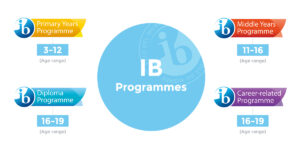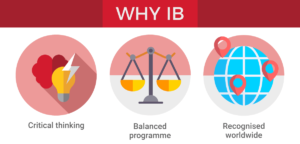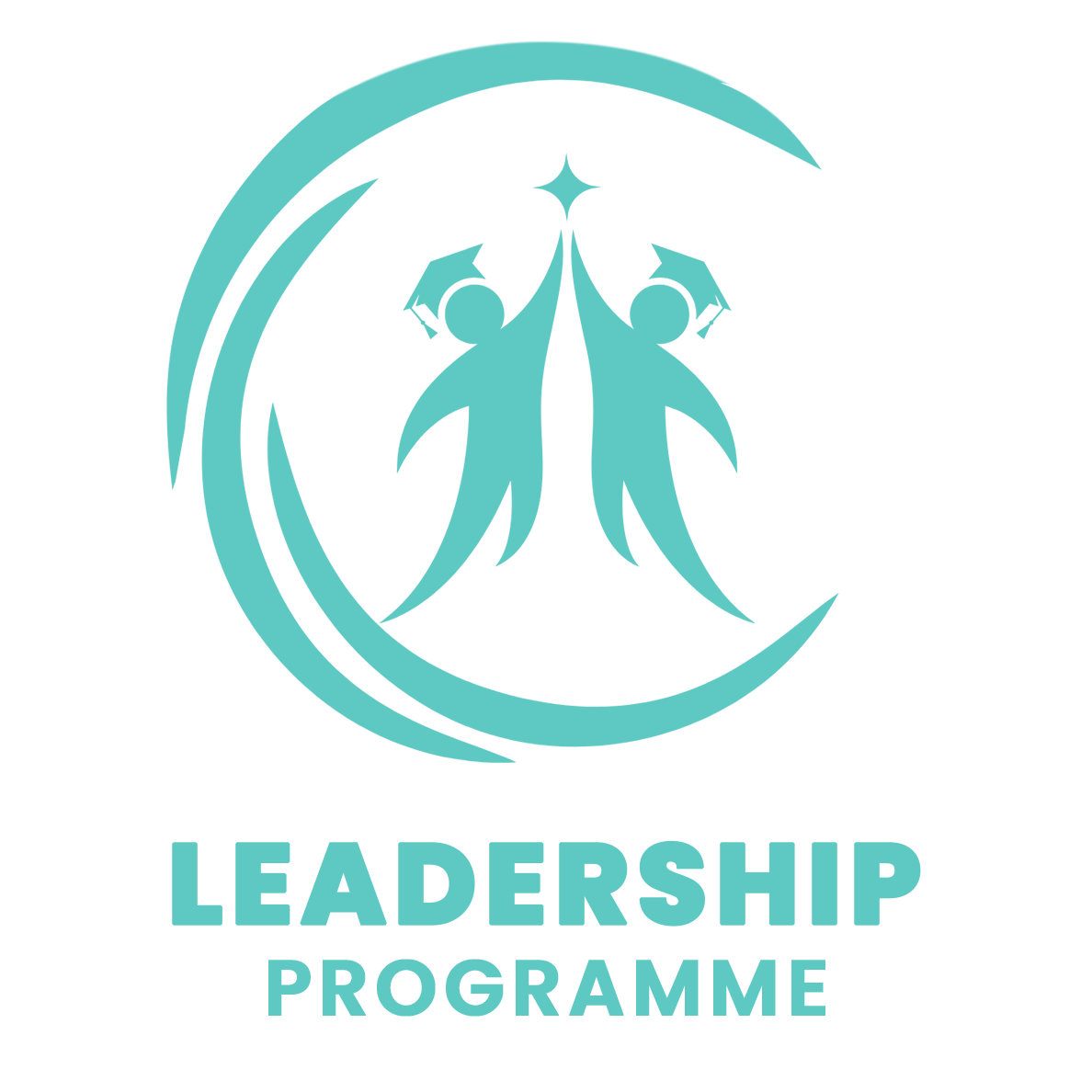
The three IB programmes ……a continuum?
My international teaching experience started in an international school in Italy, following the American National Standards. I spent several years at the school creating and developing a good, thorough curriculum that ran through all the classes.

I soon realized that using published resources did not encourage creativity and the students struggled to achieve this one concept, which for me is really important. I started to create a programme for each year and grade, following the needs of the students, defining the way acquisition of knowledge would be attained and developing an understanding and appreciation of the subject taught using various strategies.
I began the process of developing this curriculum by reading about and investigating different curricula, such as American Standards, UK National Curriculum and the Italian National Curriculum to understand how to create a progression or continuum and how best to construct a link with the idea I had about developing authentic passion for my students. After two years I had developed a book organized by year and grade and created a natural and harmonic continuum from KG until grade 11, this was revised and adapted every year to ensure the needs of the students were being adequately met and the course remained current and relevant.
When I moved to another international school, I was under the impression I would find a definite programme connecting the Primary Years Programme (PYP), Middle Years Programme (MYP) and Diploma Programme (DP), I was really surprised to find out there was no sequence of study for students that finished PYP and began MYP, and nothing from MYP to DP either. So, I worked again to build a programme, starting to understand the needs of the students, demands of the IB framework and make a solid sequence of studies, working on unit plans and an MYP framework based on my own experience, as well as reading and studying all the IB documents to understand and develop a good, progressive and intensive programme, with the goal of how to prepare students to approach the DP course.
The continuum in the three IB programmes.

Before talking about the curriculum in term of continuity, let’s think about who is involved in curriculum and its development.
Planning and developing a curriculum involves many people working together, sharing the same vision or perhaps dissimilar visions, often using different approaches and diverse methodologies. Everyone has a key role to play in order to develop an outstanding programme for students; starting with the teachers, principals, parents, specialists, industry, community groups, and finishing with government and politicians (Marsh, 1997). So, the entire group mentioned designs what actually will happen to children in school, on their journey of education (Stobie, 2007) and the curriculum could be profoundly influenced by each of them. While the aims, objectives and curriculum models have common elements; the effectiveness of implementation of a sequence of two or three programmes depends ultimately on a commitment by the school to a continuum. This requires continuous, mutual cooperation and collaboration between all staff and teachers at all levels. (Millikan, 2001).
What are the basic arguments for continuity?
Before one can argue for or against continuity, one must have a definition of a continuum. The following definitions of continuity give a starting point.
A continuum is ‘a coherent whole characterized as a collection, sequence, or progression of values or elements varying by minute degrees’ (Merriam-Webster dict.).
A continuum is a ‘a link between two things, or a continuous series of things, that blend into each other so gradually and seamlessly that it is impossible to say where one becomes the next’. (Bing dict.)

It therefore makes sense that if a given curricula is a continuum; it will be based on a continuity of learning. This seems to be definitive and unarguably the way education should be structured. This is supported by a quote which states the following ‘The IB continuum of education is extremely important as it departs from a single educational philosophy and is then branched throughout the human continuum of development with consistent pedagogical elements. That is what a coherent educational model is all about.’ (Williams, 2014)
However, with further reading I came to understand that there is a risk in continuity without change. Levinson (2013) argues that although continuity is important for education it is as important if not more so to incorporate change into curricula and education at large.
It is always a desirable goal or is there circumstances in which continuity is not appropriate?
There is times when change in education is more important that continuity. For example when there is no formalised education system. An example of this is in the United States before independence, the important thing was to change the system at the time to allow a greater number of people to be educated and to move away from home schooling which gave most people rudimentary math and literacy skills based mainly on the bible.
Levinson suggests that if one examines popular convictions about modern education as compared to tribal education systems such as modern education systems of the West are ‘oriented to change, to constant adaptive innovation’ and tribal education systems ‘emphasized continuity above all’. One will find that this is not actually the case, closer examination by Levinson (2013) through his research has revealed that ‘tribal societies have continued to adapt themselves to changing physical and social environments, and have proved remarkably resilient. Meanwhile, so-called industrial societies, while employing the more efficient and abstracted technique of mass schooling, can settle into their own stagnation. Modern schools have more often than not educated for a kind of stultifying obedience, and there is ample evidence that contemporary schools of the nation-state may fail to prepare children adequately for a changing world.’
From this it can be concluded that although continuity should be a highly valued aspect of the education process, it should not be the ultimate goal and education systems need to be able to adapt and change to a changing world.
The idea of progression is often associated with continuity so that you would expect a learner to progress as he or she transfers from one ‘state’ to another.
In his article, Levinson suggests that education often leads students to think beyond their known, which gives them the skills to question and articulate their thinking. Levinson refers to a tribe in Botswana called the Kung San whom have been educated through a “Western” model and now understand modern Botswana better but also have been able to argue for their rights and advocate for them. This again is an argument for both change and continuity in that although the education system put into place in the schools that service this community is continuous, the change has been to educate the children of this tribe, causing a change in their thinking and skills.
In my own teaching experience it certainly has been proved that continuity in the curriculum helps students transfer from one grade to the next and from one phase or stage of schooling to another. However, the arguments put forward by Levinson have brought me to a clearer understanding that education has to have an element of change in it in order to remain current and ensure it meets the needs of the students, supporting them culturally and preparing them for life after school. This supports the ideas put forward at the start of this section of the curriculum needing to be supported and, in some ways, created by all stakeholders.
The cultural context is often seems to be ignored – continuity as perceived by the learner may be at odds with continuity as imagined by the organisation/system.
“Education may be seen as a constant process of cultural production … individuals or subcultures can modify or extend the knowledge, in effect organizing the knowledge for themselves while producing and adding new knowledge to the common stock.” (Levinson, 2013)
The quote above has repercussions on any curricula being taught outside its source, for example, the British curriculum being taught in Cambodia should take into account the cultural understanding of continuity and the needs of the country as well as the cultural makeup of the school. This is an area that the IB lends itself well to in the focus on International mindedness and the Learner Profile, as they are both built into the continuum of the IB, if they are implemented and applied diligently. It is also something any school can attain if prepared to work for it. If this is done then there should theoretically be no tension between any student and the continuity of the curriculum on offer, however the practise and the theory are often at two divergent ends of the spectrum, unfortunately. It is not unusual that a school will mould the culture of the individuals attending it, which is inevitable, more than the individuals will mould the culture of the school, which should happen more than it does generally. Levinson (2013) also states ‘Education can just as likely serve as the vehicle of domination of one group over another as it pursues its own interests’. The negative power of education and the continuity offered by the curricula being taught is often overlooked and this is detrimental in many spheres, particularly in this period of globalisation and ‘third culture kids’.
In the IB continuum, it is easier to see how it might be manifested in some subject areas rather than others.

In a brochure published by the IB entitled, ‘What is an IB Education?’ (IB Continuum, 2013) The following is stated:
“IB curriculum frameworks value concurrency of learning. Students encounter many subjects simultaneously throughout their programmes of study; they learn to draw connections and pursue rich understandings about the interrelationship of knowledge and experience across many fields. Course aims and programme requirements offer authentic opportunities to learn about the world in ways that reach beyond the scope of individual subjects.”
This ties back to a statement made earlier about the importance of learning with understanding and therefore the importance of continuity in the curriculum. The IB frameworks if applied with rigor can provide seamless continuity across the curricula. This must start with the coordinators of the programmes, with the support of the head of school, ensuring the staff know how to work with and are supported in the framework and scaffold their curricula accordingly and ends with teaching staff applying the ideologies, principles and content in the classroom situation.
To conclude I can say that there is no straightforward answer to define a continuum across the three IB programmes. The three IB programmes were created as separate programmes supporting the same ideologies. This means that although there are similarities there is not an innate continuity between them. Furthermore, within the individual programmes the extent to which the continuity of the curricula is implemented is highly dependent on the teaching staff and administrators. Collaboration is extremely important to build a continuum in the IB Curriculum, and regular conversations about students and the programme involving all the community members will improve the quality of teaching, the consistency and the coherence within and between the three programmes and ensure that the entire community buy into the same vision, attaining ownership and therefore intrinsic motivation to see the curriculum flourish.
Looking forward to how a school could best implement the three IB programs as a continuum, Lawton (1989) suggests that teaching staff are given relevant and regular professional development, that staff are included and involved in curriculum development, vertical and horizontal articulation of the curriculum is prioritised, valuable constructive evaluation of the curriculum and its delivery is done regularly and a lens on what will be required of the students once they leave the school, either to another international school or on to a tertiary institution is maintained
Hayden and Thompson (2013) suggest that the support necessary for this to happen needs to stem from the leadership of the school in terms of ensuring that staff are well trained, adequately resourced and supported in their daily teaching in order to ensure that the continuum can attain its full potential.






